Glaucoma Treatment in Israel
Glaucoma is an umbrella term describing several chronic conditions that affect the optic nerve (which transmits images to the brain) causing vision loss. Specialists separate open-angle and closed-angle variants. The first is usually painless, and characterized by progressive loss of peripheral vision. Closed-angle glaucoma is associated with strong eye pain, eye redness, pupil dilation and nausea. As glaucoma-related vision loss is rapid and irreversible. Untreated, the condition can render a sufferer blind within just a few years, so it is vital to seek glaucoma treatment as early as possible.
Therapy Options
There are three ways of treating glaucoma – conservative method (medicinal therapy), surgery and laser-therapy. While the choice of therapy depends on the type and stage, statistically, most patients are referred for surgery, the goal of which is to reduce/normalize IOP (intraocular pressure), minimize the effect of optic nerve hypoxia and improve circulation and axonal transport in the optic nerve.
All diagnostics and treatment will take place at Assuta Hospital's Atidim Center.
Diagnosis
- OCT
- Visual field test
- Ophthalmologist consultation
Surgical Glaucoma Treatment
- Preoperative preparation including an ECG, and blood work up (CBC and CMP)
- Operative procedure
- Disposable materials & equipment
In cases of bilateral glaucoma, the eye affected more severely will be treated first. The other eye can be treated 3 to 4 months following the first surgery. You will be required to remain in Israel for approximately 12 days following the procedure.
Please note that the diagnostic part of our glaucoma treatment in Israel program is performed on an outpatient basis.
Types of Glaucoma
Glaucomas can be congenital, juvenile, primary (age-related changes) or secondary (brought on by other eye diseases). Glaucoma prevalence increases with age, affecting 3 per cent of people over the age 75 worldwide. It is also the leading cause of blindness.
Risk Factors
When the glaucoma is not congenital, main risk factors include eye trauma, elevated intraocular pressure, family history, diabetes, obesity, hypertension and regular use of steroid medications.

